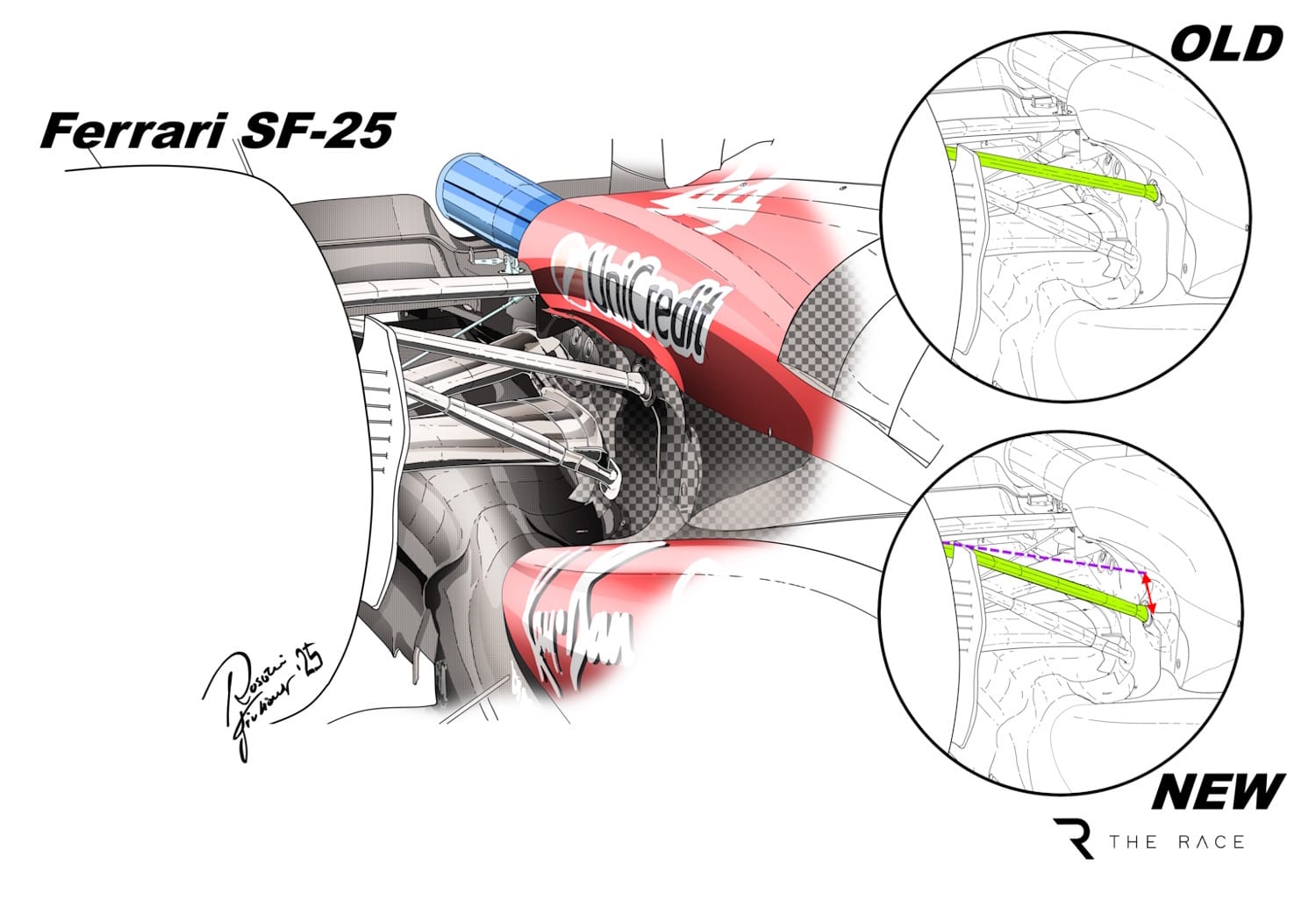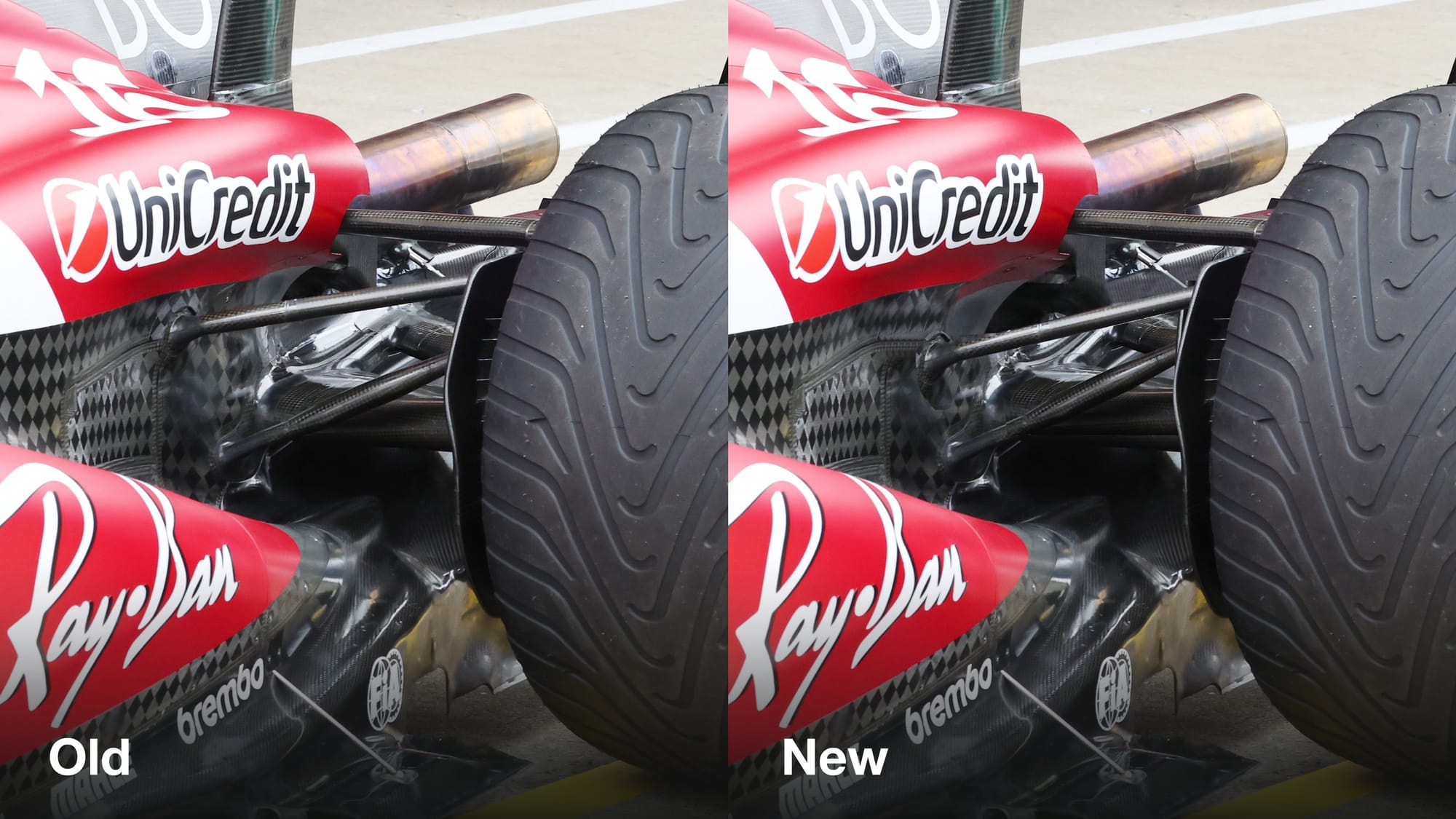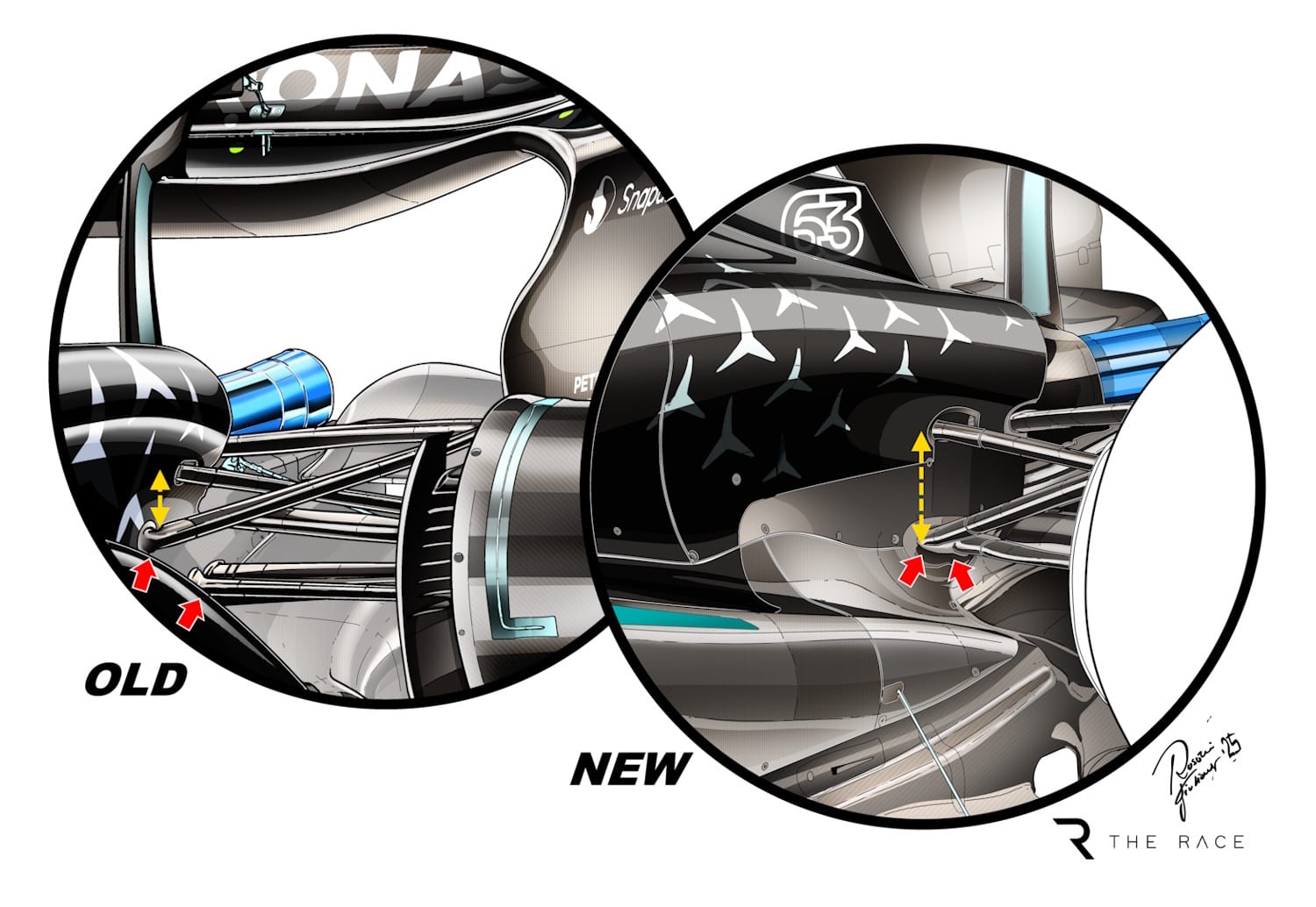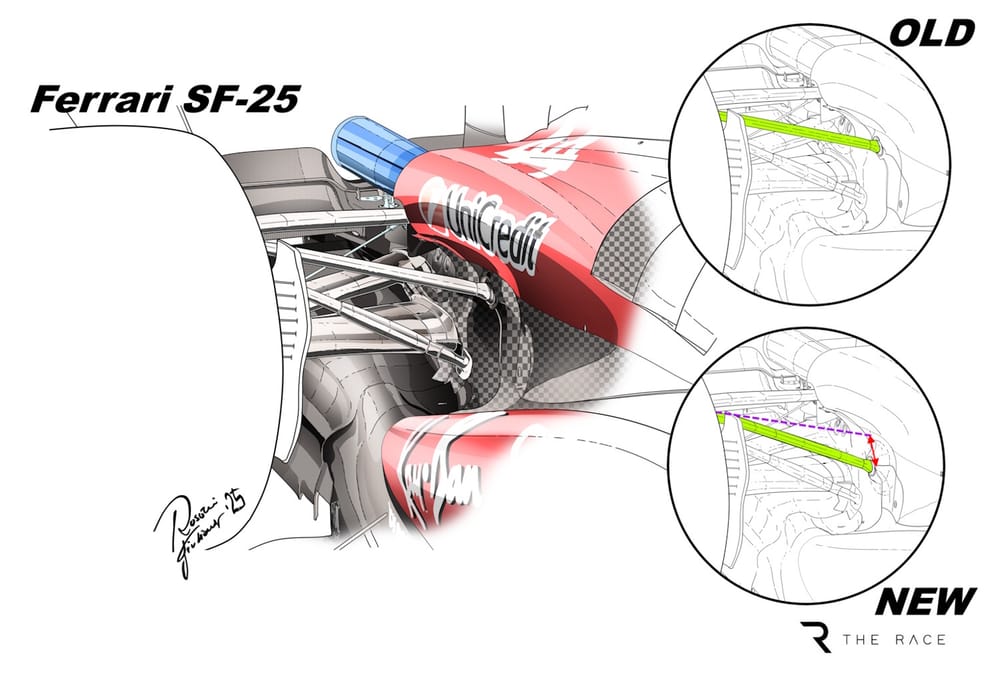Ferrari has been planning a rear suspension upgrade for some time now, with the modification running on a filming day at Fiorano ahead of its expected debut on the SF-25 at Spa.
In packaging its 2025 car, Ferrari moved the cockpit position rearwards, which meant the fuel tank and engine moved backwards. That compromised the space at the front of the shortened gearbox for its pull-rod operated rear suspension.
This apparently means Ferrari had to use a rear damper that couldn’t quite control the movement of the rear suspension. This could be either the two side dampers, or more likely it could be the central rear damper.
This central damper has more control of the rear ride height when the car is running in a straight line at the end of the straights. We have heard on many occasions that Ferrari has had to compromise the rear ride height in an attempt to reduce plank wear.
The damper doesn’t really control the height of the rear of the car. What it will do is control the rate of change of the rear of the car, especially if it gets into an aerodynamic porpoising frequency.

The damper can change the frequency of that ride height change to get it away from the frequency of the aerodynamic separation and re-attachment problems.
What we can see is that Ferrari has also increased the anti-lift on the rear suspension top wishbone forward leg. For the effort involved in doing this, I’m not seeing as much of a change as I would have expected.

Increasing the anti-lift on the rear of the car, as Mercedes also did with its Imola upgrade (see below), does what it says on the tin. It keeps the rear lower under braking, so offers more rear stability in the braking and corner turn-in area.

Spa will tell us if Ferrari has achieved its objectives and can run the car as intended, maximising the ground effect downforce by allowing the car to run lower.
Spa is a great car and driver track and under normal circumstances, which we don’t always get in Belgium because of the risk of rain, the best car and driver will come out on top.



